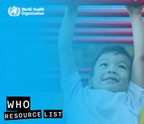India. Odisha. Bhubaneswar. Residents park in Bhubaneshwar. 13.12.2018 © 2018 Florian Lang / GIZ
Lead poisoning
Lead is a naturally occurring toxic metal found in the Earth’s crust. Its widespread use has resulted in extensive environmental contamination, human exposure and significant public health problems in many parts of the world.
Important sources of environmental contamination include mining, smelting, manufacturing and recycling activities, and, in some countries, the continued use of leaded paint and leaded aviation fuel. More than three quarters of global lead consumption is for the manufacture of lead-acid batteries for motor vehicles. Lead is, however, also used in many other products, for example pigments, paints, solder, stained glass, lead crystal glassware, ammunition, ceramic glazes, jewellery, toys and some cosmetics and traditional medicines. Drinking water delivered through lead pipes or pipes joined with lead solder may contain lead. Much of the lead in global commerce is now obtained from recycling.
Young children are particularly vulnerable to the toxic effects of lead and can suffer profound and permanent adverse health impacts, particularly on the development of the brain and nervous system. Lead also causes long-term harm in adults, including increased risk of high blood pressure and kidney damage. Exposure of pregnant women to high levels of lead can cause miscarriage, stillbirth, premature birth and low birth weight.
Lead is a well-recognized toxicant that has wide-ranging health impacts, affecting the neurological, cardiovascular, gastrointestinal and haematological systems. Young children are particularly vulnerable because they have higher exposures than adults and because lead affects the developing brain, potentially resulting in reduced intellectual ability. Lead in the body is distributed to the brain, liver, kidney and bones. It is stored in the teeth and bones, where it accumulates over time. Lead in bone is released into blood during pregnancy and becomes a source of exposure to the developing fetus.
Human exposure is usually assessed through the measurement of lead in blood. There is no known safe blood lead concentration; even blood lead concentrations as low as 5 µg/dL may be associated with decreased intelligence in children, behavioural difficulties and learning problems. As lead exposure increases, the range and severity of symptoms and effects also increase.
Encouragingly, the successful phasing out of leaded gasoline in most countries, together with other lead control measures, has resulted in a significant decline in population-level blood lead concentrations. As of July 2021, leaded fuel for cars and lorries is no longer sold anywhere in the world. However, more needs to be done to phase out of lead paint: so far, only 43% of countries have introduced legally binding controls on lead paint.
Diagnosis of lead poisoning and treatment decisions are based on medical history, clinical examination and the results of investigations, including the blood lead concentration, biomarkers of effect such as a full blood count and, if relevant, medical imaging.
If the patient is clinically well, surgical removal is not necessary, but the blood lead concentration should be measured periodically to check for lead absorption. Treatment options should be reviewed if the patient becomes symptomatic or if the blood lead concentration starts rising.
The systematic reviews of evidence identified few good-quality studies of the effectiveness of the treatment interventions for lead exposure, and more evidence would increase the certainty of the recommendations.
Confirmation of exposure to lead should be followed by termination of that exposure, as without this measure lead will continue to exert its toxic effects. When blood-lead levels are high and the patient has significant features of lead toxicity, chelation therapy to facilitate lead excretion may improve health outcomes. Gastrointestinal decontamination and nutritional supplementation may also play a role in treatment in specific circumstances.














